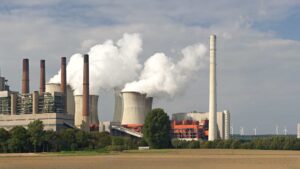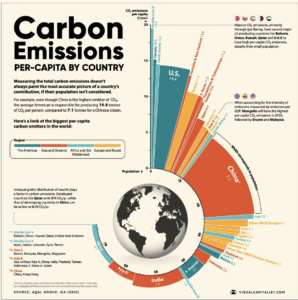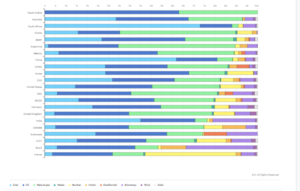Introduction
 In recent times, wherever one travels in India, and in all big cities, one is bombarded with the message on the lines that “India under Modi rule has become so great that the G20, or the most powerful country’s grouping in the world, has become awed by and bowed down to Modi-raaj, and handed over the presidency of the group to India”. So what is this G20, and how does a country become its president? The cold and hard fact is that the “presidency” is a rotating post, and each year it passes to one of the members. Just the past year (before December 2022), Indonesia was the president of the G20. Now that punctures the hype of Modi’s India achieving greatness a bit. Surely Indonesia with a population of around 28 crores, and a GDP of about USD 1,200 billion (compared to India’s nearly USD 3,000 billion and China’s 17,900 billion or about five times that of India’s GDP in per capita basis), ruled by a president called Joko Widodo (whom very few people in India would have heard of), cannot be So Great to be President of G20 Before Modi ji and India, if G20 presidency had anything to do with greatness or power!!
In recent times, wherever one travels in India, and in all big cities, one is bombarded with the message on the lines that “India under Modi rule has become so great that the G20, or the most powerful country’s grouping in the world, has become awed by and bowed down to Modi-raaj, and handed over the presidency of the group to India”. So what is this G20, and how does a country become its president? The cold and hard fact is that the “presidency” is a rotating post, and each year it passes to one of the members. Just the past year (before December 2022), Indonesia was the president of the G20. Now that punctures the hype of Modi’s India achieving greatness a bit. Surely Indonesia with a population of around 28 crores, and a GDP of about USD 1,200 billion (compared to India’s nearly USD 3,000 billion and China’s 17,900 billion or about five times that of India’s GDP in per capita basis), ruled by a president called Joko Widodo (whom very few people in India would have heard of), cannot be So Great to be President of G20 Before Modi ji and India, if G20 presidency had anything to do with greatness or power!!
G20 and Carbon emissions: In reality, the Group of 20 or G20 is a formation of 19 countries plus the European Union (EU), formed in 1999, ostensibly in response to the economic crisis of the late 1990s. These are the countries with the biggest economies who account for about 80% of the global economic output or GDP, nearly 75% of the global trade, while hosting a little over 60% of the global population. Simultaneously, the G20 is also consuming about 85% of the Global energy supply and emitting nearly 80% of the Green House Gases (GHGs) on an annual basis. Thus, any action on economy, energy or Climate Change fronts depends very heavily on the G20 countries. So what have they done to change their energy dependence on fossil fuels, to avert a serious climate catastrophe? If we take a look at the GHG emissions by all major countries, (diagram below, from Visualcapitalist), the major contribution by G20 countries clearly stands out. One interesting point to note, is that though some of the ‘developing’ G20 countries are high up on the Total Emissions list, the per capita emissions of many of them are far lower than the rich industrialized G20 member countries, and thus the responsibilities for action to reduce the GHG emissions are also vastly different.
To have an understanding of the actions needed in the energy and climate change front, which is known as “global energy transition”, we need to understand the various connections. It has long been scientifically established that the excessive extraction and burning of carbon based fuels (fossil fuels – Coal, Petroleum and Natural Gas) have dumped humongous amounts of carbon dioxide in the atmosphere (and in the Oceans too, acidifying them nearly 40% over the past two centuries, putting marine life in great distress). This is leading to the continuous rise of Earth’s average temperature through the greenhouse effect, leading to massive climate driven extreme events and ultimately to catastrophic collapse of many Earth Systems, causing many life support ecosystems to weaken and finally collapse. The present day annual CO2 emissions have reached almost 40 billion tons, whereas all the Earth’s Carbon sinks (systems that sequester or soak in carbon dioxide, like forests, rock-weathering, dissolution in Ocean water etc) cannot sequester even 50% or half this amount. As a result, the remaining CO2 is building up in concentration in the Earth’s atmosphere year after year, roughly at a rate of 2 parts per million every year, and is at a dangerous 418 ppmv (parts per million by volume in the atmospheric gases).
Many scientific studies have shown that anything beyond 350 ppmv will cause significant climate change, and 450 ppmv and beyond might lead to irreversible climate collapse. If we keep increasing @2 ppmv per year, it’ll be only 16 more years before we cross that irreversible ‘Tipping Point’. The biggest international body of scientists and related experts on this, the Intergovernmental Panel on Climate Change (IPCC), in its latest assessment reports (Assessment Report cycle 6 or IPCC AR6, released from October 2021 to April 2022), has indicated clearly that the world’s GHG emissions must peak (increase no more) by the year 2025 (less than 3 years from now) and sharply decrease by at least 45% by the year 2030, just eight years away. If that kind of unprecedented action is to be even attempted, the whole world and its economies have to gear up at a much bigger scale than was seen during the world wars or as a response to the COVID pandemic. Do we see anything even remotely resembling that? And do the G20 countries, being the major economic powers, major polluters, major technological powers and countries with large populations, acting in any leadership role for this historically unprecedented Energy (and economic) Transition? Let’s take a brief look (in future issues of this magazine, we will dissect these further).
Source: International Energy Agency IEA.
A close look at the chart above will cause serious despair. The total contribution of Coal (light blue), Oil/ Petroleum (dark blue) and Natural Gas (light green) – all carbon based fossil fuels, stands anywhere between 100% for Saudi Arabia (a proactive oil-pushing G20 member) to a minimum of about 50%,with an average touching 75% of their total primary energy still coming from fossil fuels! If this is the state of affairs in the world’s leading (G20) countries, with the highest access to money/finance, technology, management and global agenda domination, what can one expect from smaller countries that have none of these, and in any case insignificant contributors to the GHG driven climate crisis?
The tall claims of the G20 countries, about their global “energy and climate leadership”, about their “massive renewable energy initiatives”, about their moral leadership to save the Earth from a climate catastrophe, fall flat on the face of cold, hard data. It’s not for nothing that the UN secretary general had to repeatedly express his anguish at these callous failures to act in the face of a looming disaster, and say “Climate change is running faster than we are, and we are running out of time”. Or the IPCCs sixth assessment report generated headlines around the world, like “It’s Now or Never”. Unfortunately, even after these, the real picture seems gloomy, with the Russian invasion of Ukraine and the prolonged war causing a number of Energy Transition initiatives to go completely bonkers. So here we stand today, facing a bleak climate future, unless the people of the world rise up in a rebellion and force the global powers to drastically change, and change literally overnight. A very tall order, but…
Centre for Financial Accountability is now on Telegram. Click here to join our Telegram channel and stay tuned to the latest updates and insights on the economy and finance.



